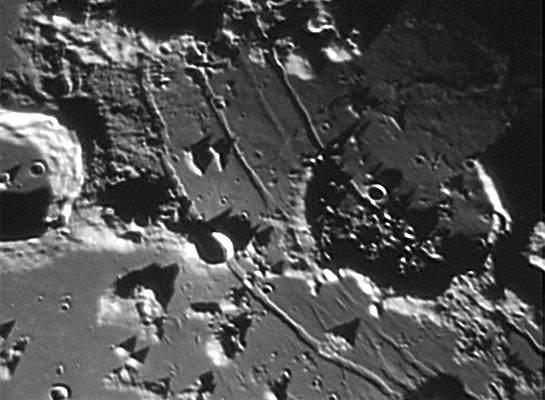Difference between revisions of "January 26, 2004"
| (One intermediate revision by the same user not shown) | |||
| Line 1: | Line 1: | ||
__NOTOC__ | __NOTOC__ | ||
=Hippalus Arcs= | =Hippalus Arcs= | ||
| + | <!-- Start of content --> | ||
<table width="85%" border="0" align="center" cellpadding="6" cellspacing="2"> | <table width="85%" border="0" align="center" cellpadding="6" cellspacing="2"> | ||
<tr> | <tr> | ||
| Line 58: | Line 59: | ||
<div align="center"></div> | <div align="center"></div> | ||
<p> </p> | <p> </p> | ||
| − | + | <!-- End of content --> | |
| − | + | {{wiki/ArticleFooter}} | |
| − | |||
| − | |||
| − | <!-- | ||
| − | |||
| − | |||
| − | |||
| − | |||
| − | |||
| − | |||
| − | |||
Latest revision as of 18:10, 7 February 2015
Hippalus Arcs
Image Credit: Stephen Keene |
|
Hippalus Arcs Impact basins are characterized by a family of features such as multiple rims, concentric fractures and ridges, a central depression, radial markings, and extensive ejecta deposits. This list results not from a single perfect basin, but from recognizing consistent patterns in all the Moon's basins. The best place on the Moon to see basin-centered concentric rilles is near the crater Hippalus on the east side of Mare Humorum. In this remarkable image by Stephen Keene, Hippalus is the large (58 km wide) crater with a breached rim on the right side of the image, and part of Campanus is visible on the left (south up). Arcing through the middle of the image is a family of three prominent rilles whose radii of curvature point to a central focus somewhere in the middle of Mare Humorum, to the right. The low lighting reveals fragments of additional concentric and non-concentric rilles that show up better than on higher resolution Lunar Orbiter images. And in the center upper half of the picture is a small rimless pit that seems to be at the summit of a very low swelling. Is this a dome? A previously unknown one? Technical Details: Related Links: Yesterday's LPOD: On the Limb with Alika Tomorrow's LPOD: Davy's Chain |
Author & Editor: |
COMMENTS?
Register, Log in, and join in the comments.




